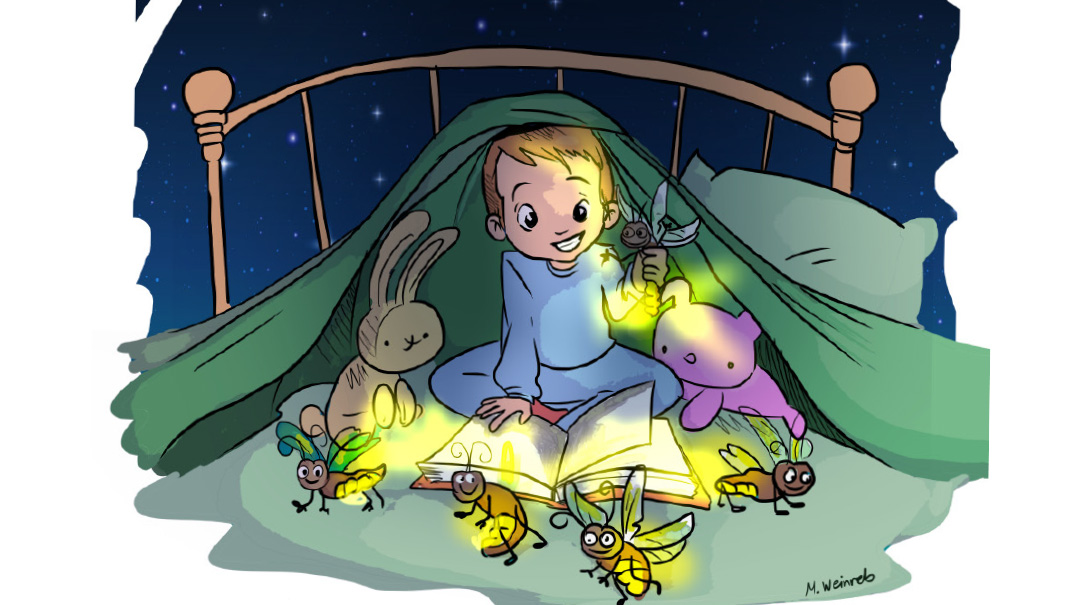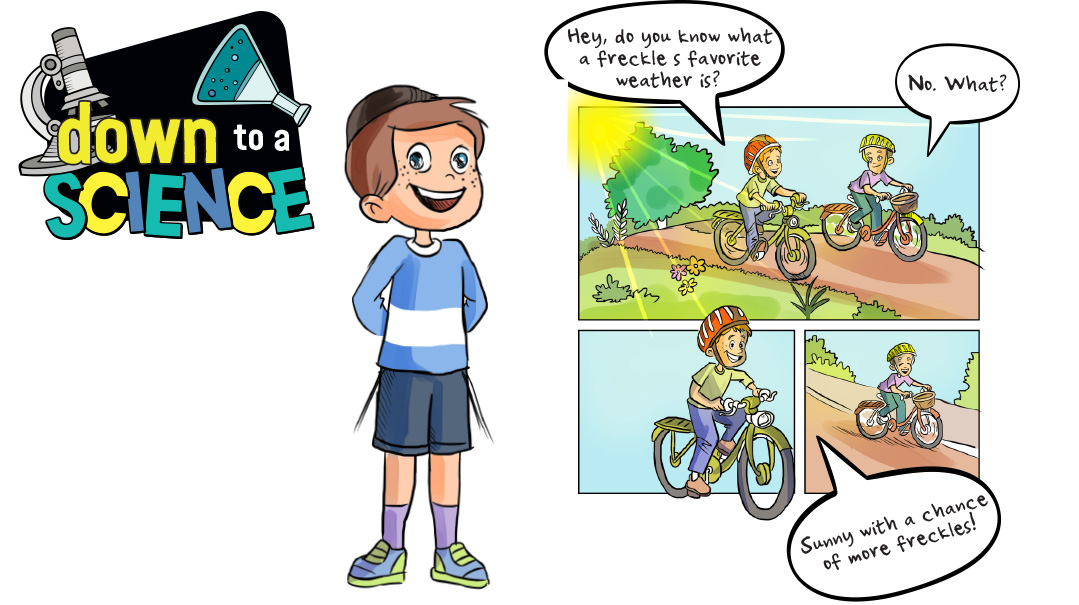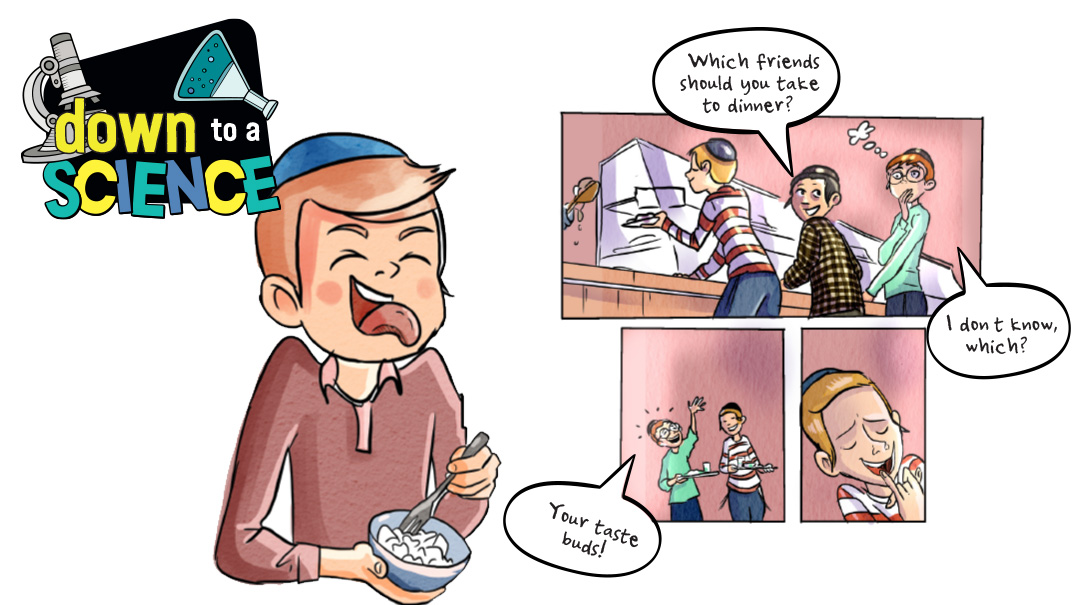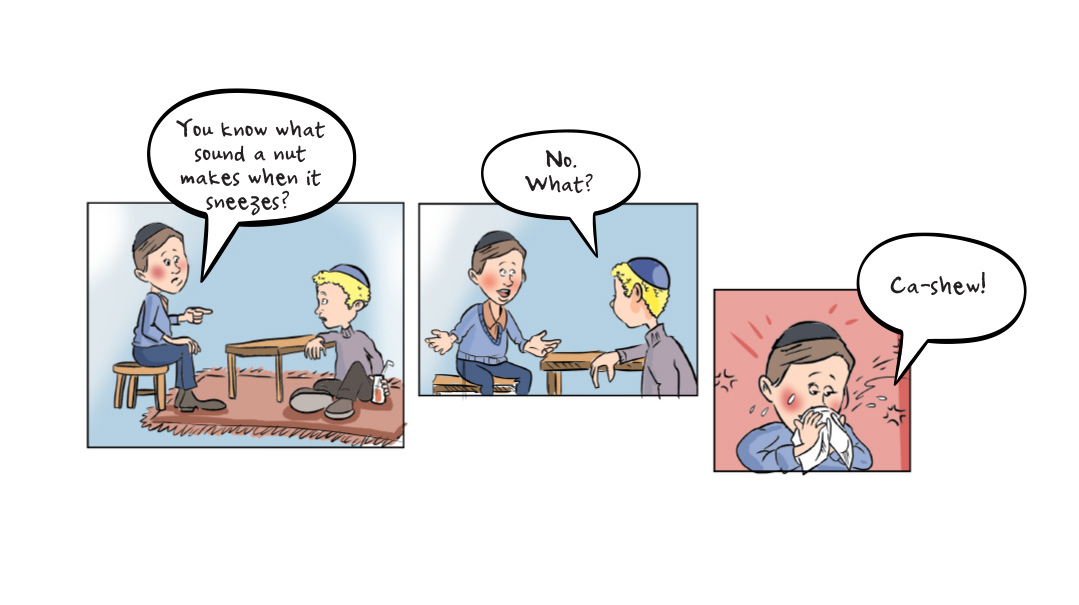What Causes Thunder and Lightning?

The first thing you need to know is that it’s all about electricity
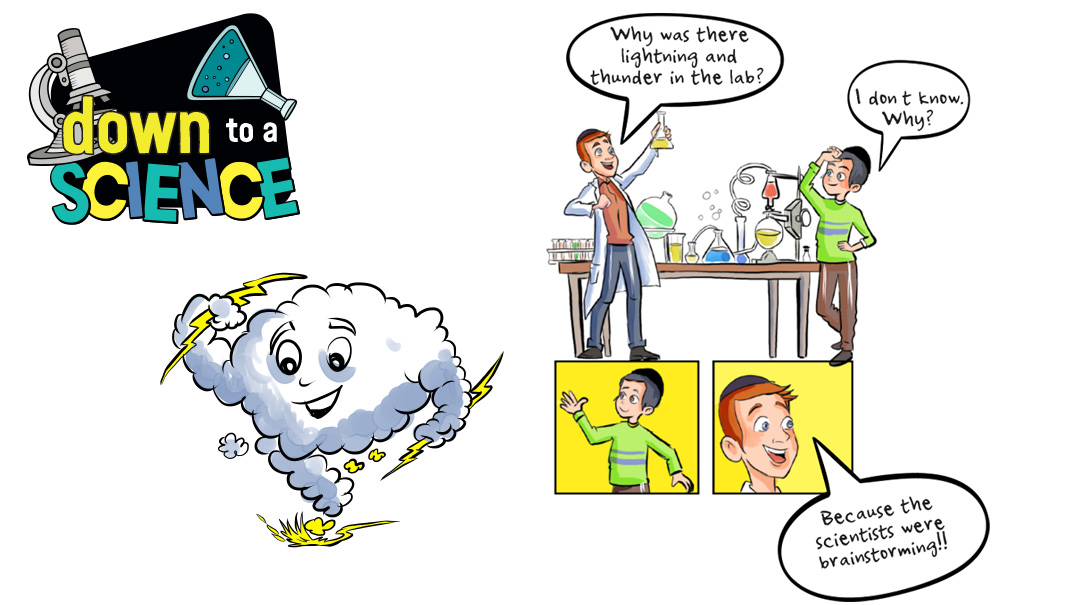
Hi, Kids,
This is Professor Mordy Maven, Thinker, Wonderer, and Figure-Outer of all things Science-ish. What that basically means is I try really hard to figure stuff out. I do the hard work so you don’t have to!
Last night I spent some time under my bed. I was there on a humanitarian mission, trying to comfort my little brother. He was terrified, and he needed my help. In case you want to know, I wasn’t frightened at all. At all!
I can’t blame the kid for being scared, though. There was a really crazy thunderstorm going on outside. Lightning was flashing and thunder was crashing and it was really, really loud and scary and… I mean it was for my little brother. Not for me, of course. I was totally cool about it.
“I skeered from da Kunda…” he kept saying. “So, so loud. Mordy, me so skeered!” Poor kid! I wrapped my arms tightly around his little body to comfort him.
Eventually, the storm stopped, and we crawled out. I got him a tissue to wipe his nose (that kid’s nose runs like a faucet!), and he went back to bed. But once I was safe and sound in my bed again, I knew I needed to find out exactly what was going on with my little brother. And also, why were my hands shaking?
As it turns out, the little guy has a bad case of astraphobia, which is a pretty common phobia. It means that he’s afraid of thunder and lightning. But then I had to wonder, what causes thunder and lightning? And are they really dangerous?
Well, the first thing you need to know is that it’s all about electricity. Lightning is really just a giant spark of electricity that happens in the atmosphere. You know how clouds look all cute and puffy and fluffy? Believe it or not, those clouds actually have electrical charges in them. Those electrical charges can be either positive or negative. But when a positive charge bounces up against a negative charge, we’ve got problems. For example, if a positive cloud bangs a negative cloud. Or a positive cloud bangs up against the ground or a tree, or a building, or anything that has a different charge, there’s a quick flash of electricity, and before you know it… zowie!!! Sparks fly, leading to a blinding flash of lightning!
Okay, fine. So klutzy clouds that keep bouncing into things are what causes lightning. But what causes thunder? Well… lightning causes thunder! Thunder, which seems so loud and scary, doesn’t happen on its own. It is actually just a sound effect caused by the lightning. When lightning strikes, it heats the air to a very high temperature, causing it to expand. The sound of the air exploding outward causes a loud, booming sound which can be very scary to little kids. (And bigger kids. But not me, of course. Other people.)
So lightning happens, and then thunder, right? Well, no. Not exactly. They actually happen at almost exactly the same time. So why do we see lightning before we hear thunder? That’s because light travels through the air about a million times faster than sound. (Important tip: In a race between light and sound, always bet on light!)
Here’s the bad news. If lightning hits a person, the incredible jolt of electricity can cause injuries or even death. If it hits a building or other object, it can even set it on fire! So it’s definitely a good idea to stay inside during a thunderstorm. As you can see, lightning is really dangerous and pretty frightening. But is there anything good about lightning? As a matter of fact, there is! Lightning causes nitrogen in the air to bond with oxygen. When rain falls, it waters plants with this nitrate-rich water which is very important for their growth. So, if you like fruits and flowers and trees and stuff, you can thank lightning for that!
And another really good thing about lightning and thunder is that they give us a reason to make the special brachos praising Hashem Who made the world and Whose power fills the earth!
There are approximately 16,000,000 thunderstorms and 1,400,000,000 lightning strikes every year. And you can’t spend all that time underneath your bed, which can make it really tough for people with astraphobia. That’s why I’m trying to get over… I mean I’m trying to help my little brother get over his fear. Even though thunder and lightning storms happen pretty often, the odds of being struck by lightning in one’s lifetime are really low, like 1 in 15,000, and we can help keep ourselves safe by staying indoors during thunderstorms. As the old saying goes, “When thunder roars, go indoors!”
And honestly, there’s something really nice about hearing the booming, seeing the flashing, and knowing I’m inside safe and sound with my little brother. He’s actually a pretty cute kid when his nose isn’t running.
Here are some fascinating facts about thunder and lightning:
A lightning bolt is around 54,000 degrees Fahrenheit. That’s hotter than the surface of the sun!
By counting the seconds between the time you see a flash to the time you hear thunder, you can figure out how far away the lightning struck. Sound travels one-fifth of a mile per second, so dividing the seconds by five will tell you how many miles away the storm is!
The different sounds of thunder have different meanings. A sharp crack or click means lightning was pretty close by. If it sounds more like a rumble, then the lightning was at least a few miles away. When you hear a really loud boom! that’s the sound of a lightning channel actually hitting the ground.
Other planets also have lightning, including Jupiter and Saturn. Scientist have seen bright flashes on Mars which they believe might be lightning too. Do you think Martians hide under their beds? Do Martians even have beds?
The energy from the average lightning bolt would be enough to operate a 100 watt light bulb for over three months.
(Originally featured in Mishpacha Jr., Issue 964)
Oops! We could not locate your form.

